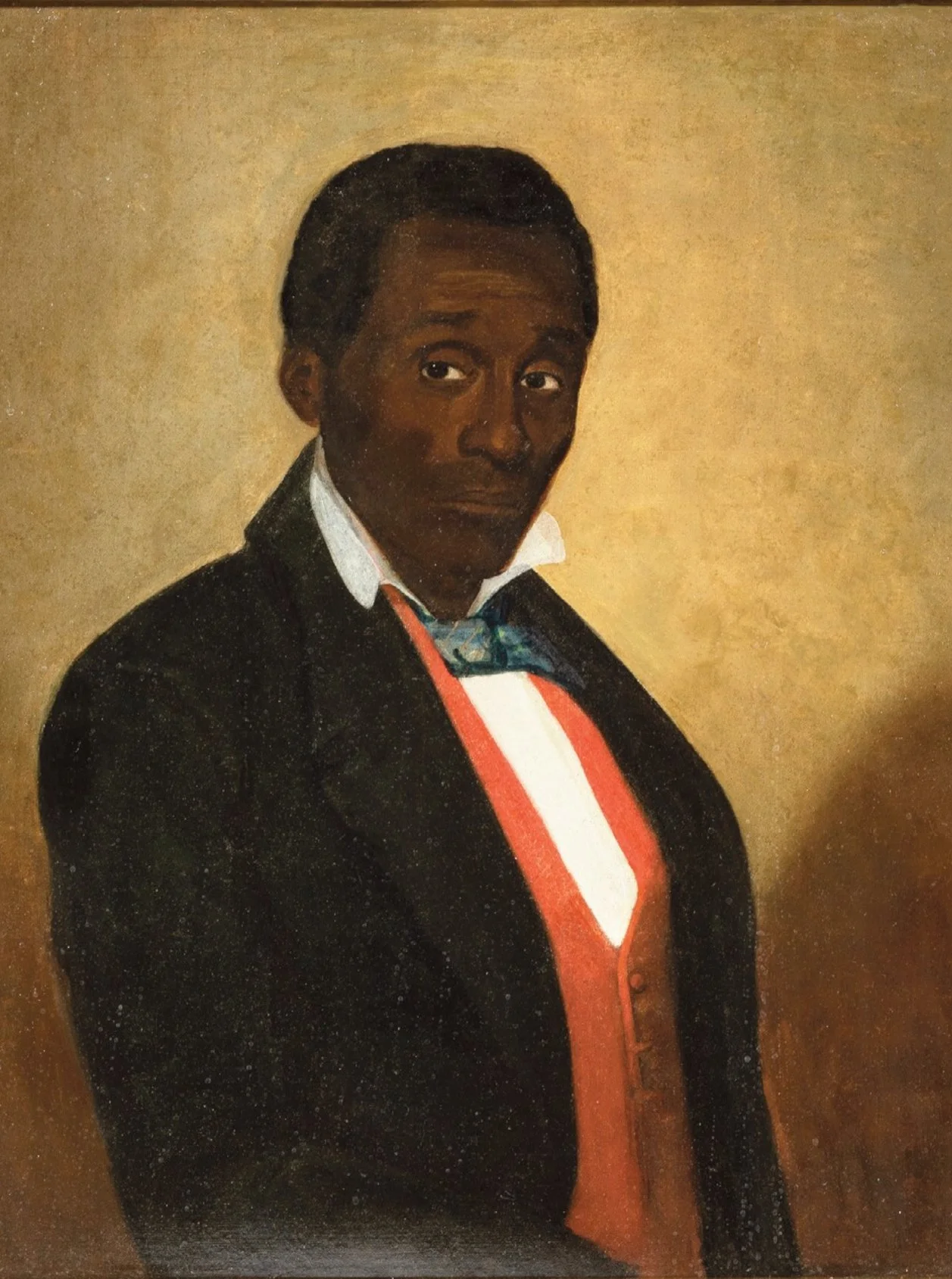Uncle Frederick
Portrait of Frederick (c. 1840), attributed to C.R. Parker. Jointly acquired by the Mississippi Museum of Art and Crystal Bridges Museum of American Art.
A newly acquired portrait of an enslaved man continues to perform a centuries-old task: absolving a nation of its sins.
In April 2025, Portrait of Frederick (c. 1840), attributed to C.R. Parker, sold at Neal Auction in New Orleans for $508,750 and was jointly acquired by the Mississippi Museum of Art and Crystal Bridges Museum of American Art. The painting is one of only two known pre-emancipation formal portraits of individuals enslaved in Mississippi, the other being Portrait of Delia.
Yet its journey from a plantation mansion to prestigious museums raises a haunting question: when does the exploitation of a human being finally end?
The Myth of the “Happy Slave”
The portrait was commissioned by Haller and Julia Nutt, who enslaved Frederick at their Natchez estate, Longwood. For over a century, it hung in the mansion, now operated by the Pilgrimage Garden Club. Historians have criticized the Club for softening or obscuring the plantation’s violent history, often portraying Frederick as “friendly,” “faithful,” and affectionately “Uncle Frederick.”
This was the portrait’s original political function: to reinforce a myth of benevolent slavery. By dressing Frederick in fine clothes and immortalizing him in oil, the Nutts created “evidence” they could point to as proof of kindness and paternalism. The act of commissioning a portrait of an enslaved person—a privilege rarely extended—was a tool of propaganda.
The Defiant Gaze
Yet when we look at Frederick, we see more than the family’s narrative. His expression is watchful and weary. He had no power to decline the sitting or control the story of his image. In that moment, he was posed like a circus animal, his likeness weaponized to sanitize the institution that enslaved him.
Archival records complicate the sentimental story. Frederick was born around 1802. Upon the death of Rush Nutt in 1837, he was appraised at $2,000—the highest valuation among 98 enslaved people in the estate inventory, equivalent to about $65,000 today. He was inherited by Nutt’s heirs and appointed as a driver, a supervisory role over fellow enslaved laborers. While carrying minor privileges, this position entrenched his involvement in the plantation’s machinery of oppression.
After emancipation, Frederick adopted the surname Baker and became a minister, officiating marriages for newly freed couples once they were legally recognized.
The Afterlife of Exploitation
The recent sale and museum acquisition extend a cycle of exploitation. Even well-intentioned, white-led institutions now derive prestige, attendance, and funding from Frederick’s likeness. The portrait transforms from a private relic into a public object, capable of softening a nation’s reluctance to confront its history. Frederick is being made to work, again.
In a time when public figures suggest enslaved people “benefited” from skill acquisition or were “well fed,” Frederick’s dignified image becomes a tool for revisionist narratives.
Frederick is not alone.
Portrait of Delia on display at the Mississippi Museum of Art. (AP Photo/Sophie Bates)
Portrait of Delia—painted circa 1840–1849, showing a woman in silk and a headscarf—has also been romanticized as “dignified.” Yet this dignity may reflect a survival strategy rather than contentment. In death, Delia, like Frederick, remains trapped within a frame, her likeness used to carry burdens she never consented to bear.
Unending Servitude
Are Frederick and Delia in a place where their images can be truly honored, understood, and preserved among their own people? Does the legacy of those who profited from their suffering continue to exploit them even in death? Imagine if the Mississippi Museum of Art transferred stewardship of these portraits to a Black-led institution. What would that say—and what would it mean? At the Northeast Louisiana Delta African American Heritage Museum, we would welcome them both with open arms.
Such a transfer would be more than a property transaction. It would be an act of emancipation. Frederick and Delia, no longer tools of absolution, would stand as living testaments to resilience, seen and understood by those who share their lineage.
Slavery was a crime against humanity. Human trafficking, child labor, rape, and murder enriched some while devastating others. While our nation cannot yet fully atone, would these two souls finally find dignity among their own?


